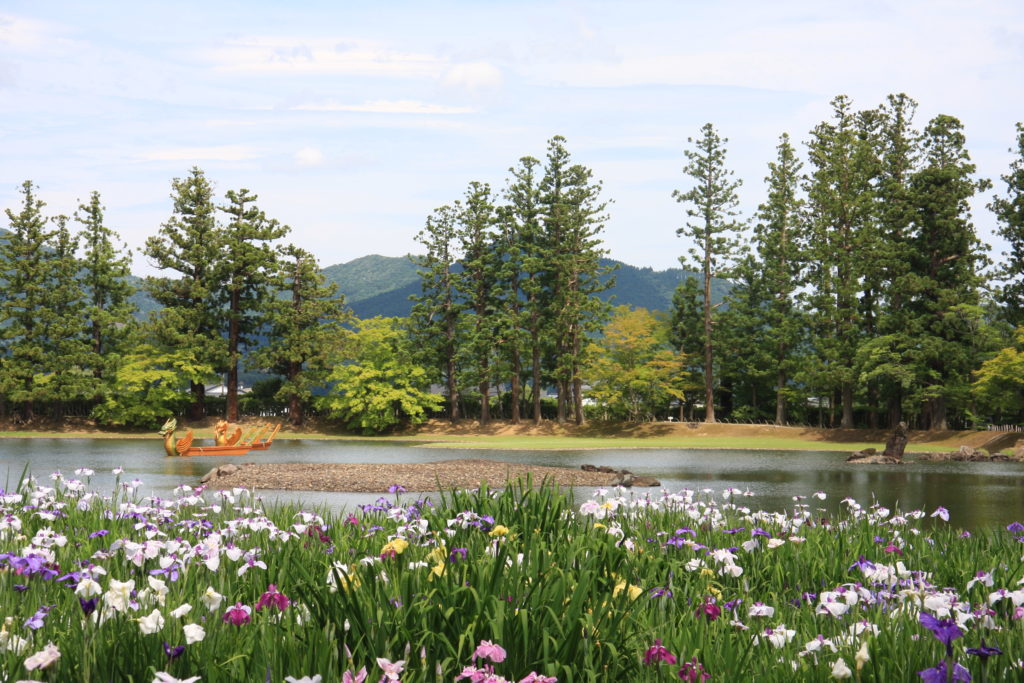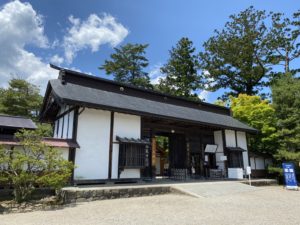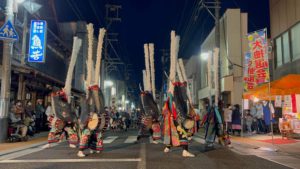Hiraizumi’s Summer Flowers
日本の東北地方とはいえ、夏は暑くて厳しいこともあります。それでも、関東よりは少し涼しく、そして平泉では大きいビルもないのでガラスの照り返しもほぼなく、風も通りやすいです。また、人にはちょっと暑いところですが、植物にはちょうどいいぐらいで、夏の平泉はますます緑豊かとなり、夏花もきれいに咲いてきます。
道端の草花や花畑、公園・寺園では花々をいっぱい見て楽しむこともできますし、平泉では夏の特別展示があります。例えば、毎年6月の中・下旬から、毛越寺の浄土庭園ではあやめ祭りが開かれます。20日から7月10日までにかけて、あやめの花開きと合わせて様々なイベントも開催されています。
例年ですと、延年の舞の奉納、お茶会、写経・写生体験、子供たちの絵の展示会などもありますが、今年は毛越寺と庭園全体の歴史跡指定100年記念と特別歴史跡指定70年記念を両方祝うため、特別にお坊さんが案内する境内散歩コースと延年の舞の講座も開かれています。境内を巡りながらお坊さんの説明と法話を聞くことができるとても貴重なチャンスです。
またあやめの方は、紫、白、黄色などのカラフルな花々が開山堂の辺りでずらりと並んで綺麗に咲いています。1953年に平泉町民の発案から始めたあやめの畑が次の年には明治神宮から寄贈頂いた100種100株を足して、年々と段々広がってきて、今ではあやめが300種で3万株も浄土庭園を背景にして咲いています。
Even in North Japan, summers can grow hot and humid. To be fair, its far more grueling even a few hours to the south, and the lack of skyscrapers means less reflected heat and more cooling wind, making Hiraizumi about as welcoming as it can get, despite the temperature. And if there’s one upside, it’s that the plants love it, and the summer months bring a bounty of fresh flowers and vibrant greenery to enjoy on your visit.
While there are plenty of wildflowers and gardens to enjoy from the roadside, and in the parks and temple gardens, there are also specially arranged flower demonstrations. You’ll find one such event at Mōtsū-ji Temple, starting late June. Beginning on the 20th every year, and running until July 10th, the Mōtsū-ji Iris Festival features special events to coincide with the blooming of the Iris beds planted in the temple grounds.
Typical festivities every year include performances of the Ennen no Mai, a traditional ritual dance that has been handed down for hundreds of years at Mōtsū-ji, tea ceremonies, sutra copying, and art exhibits. This year, to mark the 100th anniversary of being named a National Historical Monument, and the 70th anniversary of being designated an even more prestigious Outstanding Historical Monument, temple monks are also specially offering guided tours of the temple garden, and lectures on the history of the Ennen-no-Mai dance and an explanation of its movements.
Meanwhile, row upon row of irises, nearly 30,000 flowers featuring over 300 varietals, are planted in the temple garden, in beds in front of and around the Founder’s Hall. The tradition of planting Irises began in 1953, with a small display organized and donated by local citizens. The following year, a donation of 100 flowers was contributed by the Meiji Jingu Shrine in Tokyo, and the display has gradually grown every year since. The bright, colorful flowers make for a lovely sight against the backdrop of the temple pond.

「Irises of many shapes and colors growing in Mōtsū-ji Temple’s garden.」
また、7月になると、中尊寺にもとても特別な花が咲き始めます。それは「中尊寺ハス」という蓮。中尊寺ハスは1株1株大切に栽培されてから各所の池に移されます。藤原氏とのゆかりのある地でも見ることができますが、中尊寺を訪ねる際は坂の上の駐車場の側にある池で見ることができます。
中尊寺蓮は(種が藤原氏四代の泰衡公の遺体と共に葬られていたため「泰衡蓮」とも呼ばれます)、現代には同類はないと見られているとてもユニークな蓮です。800年も中尊寺の金色堂で眠っていた、平泉の疾うの昔から復活された古代花です。
1950年、金色堂の内部と藤原氏の4人のご遺体の調査の時、泰衡の首が入っている棺で蓮の種が見つかりました。12世紀では、源頼朝によって侵略され滅ぼされた際、藤原氏4代泰衡公の首も取り上げられました。そのあと、泰衡の首が回収され、祖父達と一緒に金色堂の仏台の下で葬られました。泰衡のその首桶の中で、藤原の時代から入っていた蓮の種も見つかりました。
Another very special flower also begins blooming at Chūson-ji Temple every year, in July: The Chūson-ji Lotus. The flowers are carefully, individually cultured before being transferred to small ponds, including one display near the rear of the temple, just past the small hilltop parking area.
The Chūson-ji Lotus, sometimes known as a “Yasuhira Lotus” after the fourth ruler of Hiraizumi, with whom the seeds were buried, is a special variety of lotus flower without any known modern relatives, cultured from seeds preserved for over 800 years inside Chūson-ji’s Golden Hall – a survivor from Hiraizumi’s long-distant past, resurrected from a time capsule.
The seeds were discovered in 1950, during an examination of the Golden Hall and the preserved bodies of the four Fujiwara rulers. Fujiwara Yasuhira, Hiraizumi’s fourth generational ruler, was defeated and beheaded during the invasion of Hiraizumi in the 12th century, and only his head is entombed in the Golden Hall, but it was in that small casket that ancient lotus seeds from Yasuhira’s time were also discovered.

「The large, bright pink flowers of the Chūson-ji Lotus」
その蓮の種子を発芽させようと、種の一部が調査に参加した植物学者の大賀一郎博士に預けられました。発芽できないまま数十年が過ぎ、その後、門弟であった長島時子教授が依頼を受け、平成五年に発芽に成功しました。そして、平成十年に、およそ810年の時を得て中尊寺ハスは開花しました。そして現在、毎年7月中旬から8月中旬にかけて、20センチにもなる大輪のピンク色の花が見られます。
「歴史」というのは必ずしも「過去」のものとは限りません。この平泉は「歴史が息づく町」とも言われますが、それは、現代まで保存されている昔の歴史跡を見られるからだけではありません。平泉の文化遺産と、それを引き嫁いで受け入れる平泉の人々の活動にも見ることができます。50年も800年も元気に生きているこれら夏花の姿には、平泉の伝承が見えます。平泉へのお越しの際には、皆さんも平泉に生きる歴史を顧みてはいかがでしょうか。
It took nearly another fifty years for the seeds to be successfully germinated. First, Japanese lotus expert Ichiro Oga, and later, Toshiko Nagashima both attempted to cultivate the ancient seeds, until Nagashima finally succeeded in 1995, and the first blooming flower was revealed in 2000, over 800 years after the fall of the Fujiwara. Today, you can see the lotuses blooming from mid July into August, with their characteristically large and wide pink flowers.
Hiraizumi has a rich history, but here, you can see that history is not just a thing of the past. Hiraizumi is home to living history, both in the surviving historical sites that have been preserved into modern day, but also in the traditions and the community that continue to embrace them. Whether those traditions reach back 50 years or hundreds, these special flowers are only one visible facet of Hiraizumi’s long cultural history. We hope you get a chance to appreciate them on your visit.


